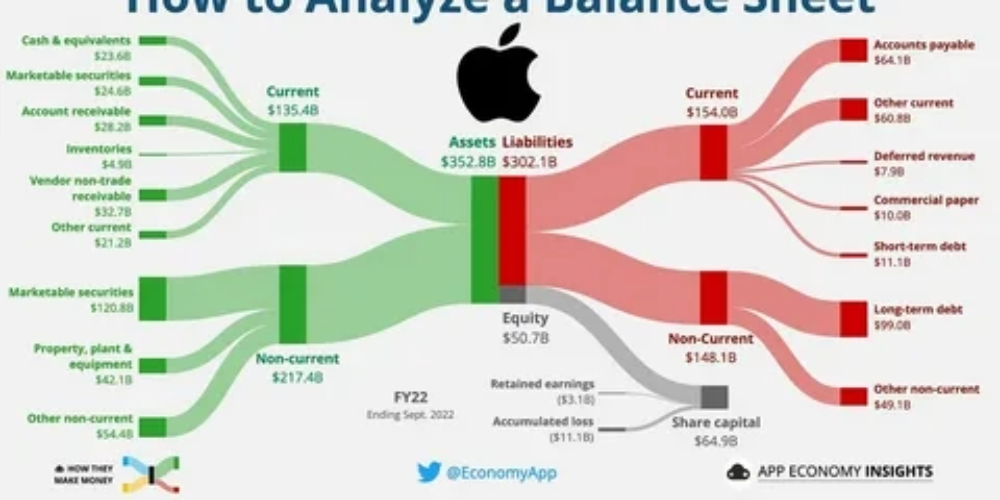Introduction
Investing in the stock market can be highly rewarding, but it requires a solid understanding of financial statements. Among the three key financial statements—income statement, cash flow statement, and balance sheet—the balance sheet is often overlooked by beginners. However, it provides crucial insights into a company’s financial health, helping investors pick winning stocks with strong fundamentals.
In this guide, we’ll break down balance sheet analysis in simple terms, highlight key metrics to evaluate, and show you how to use this information to identify undervalued stocks and avoid risky investments.

What Is a Balance Sheet?
A balance sheet is a financial statement that provides a snapshot of a company’s assets, liabilities, and shareholders’ equity at a specific point in time. It follows the fundamental accounting equation:
Assets = Liabilities + Shareholders’ Equity
This means everything a company owns (assets) is financed either by borrowing (liabilities) or by shareholders’ investments (equity).
Key Components of a Balance Sheet
- Assets – What the company owns (e.g., cash, inventory, property).
- Liabilities – What the company owes (e.g., loans, accounts payable).
- Shareholders’ Equity – The net worth of the company (assets minus liabilities).
By analyzing these components, investors can assess a company’s financial stability, liquidity, and growth potential.
Why Balance Sheet Analysis Matters for Stock Picking
Many investors focus only on earnings and revenue growth, but a strong balance sheet is equally important. Here’s why:
- Avoiding Debt Traps – Companies with excessive debt may struggle during economic downturns.
- Identifying Financial Strength – Firms with strong cash reserves and low liabilities are more resilient.
- Spotting Undervalued Stocks – Some stocks trade cheaply due to market sentiment, but a solid balance sheet indicates long-term potential.
Now, let’s dive into the key metrics to analyze.
Key Balance Sheet Ratios for Stock Analysis
1. Current Ratio (Liquidity Check)
The current ratio measures a company’s ability to pay short-term obligations with its current assets.
Formula:
Current Ratio = Current Assets / Current Liabilities
- Above 1.0 = The company can cover its short-term debts.
- Below 1.0 = Potential liquidity issues.
Ideal Range: 1.5 to 3.0 (varies by industry).
2. Debt-to-Equity Ratio (Leverage Check)
This ratio shows how much a company is financed by debt versus shareholders’ equity.
Formula:
Debt-to-Equity Ratio = Total Debt / Shareholders’ Equity
- Below 0.5 = Low debt, financially stable.
- Above 2.0 = High debt, higher risk.
Note: Some industries (like utilities) naturally have higher debt levels.
3. Quick Ratio (Acid Test)
Similar to the current ratio but excludes inventory (which isn’t always easily convertible to cash).
Formula:
Quick Ratio = (Current Assets – Inventory) / Current Liabilities
- Above 1.0 = Good short-term liquidity.
- Below 1.0 = Possible cash flow problems.
4. Return on Equity (ROE) (Profitability Check)
ROE measures how efficiently a company generates profits from shareholders’ equity.
Formula:
ROE = Net Income / Shareholders’ Equity
- Above 15% = Strong profitability.
- Below 10% = Weak performance.
5. Working Capital (Operational Efficiency)
Working capital indicates how much liquid assets a company has to fund daily operations.
Formula:
Working Capital = Current Assets – Current Liabilities
- Positive = Healthy operations.
- Negative = Potential financial distress.

How to Use Balance Sheet Analysis to Pick Winning Stocks
Step 1: Look for Strong Liquidity
Companies with high current and quick ratios can handle short-term obligations, reducing bankruptcy risk.
Example: A tech company with 500Mincurrentassetsand500Mincurrentassetsand200M in current liabilities has a current ratio of 2.5, indicating strong liquidity.
Step 2: Avoid Excessive Debt
High debt-to-equity ratios can lead to financial strain. Look for companies with manageable debt levels.
Example: A manufacturing firm with 1Bindebtand1Bindebtand2B in equity has a debt-to-equity ratio of 0.5, which is safe.
Step 3: Check for Consistent Equity Growth
A rising shareholders’ equity over time means the company is reinvesting profits effectively.
Example: If a company’s equity grows from 1Bto1Bto1.5B over three years, it’s a positive sign.
Step 4: Compare with Industry Peers
Some industries (like banking) have higher debt levels, so always compare ratios with competitors.
Example: A retail company with a current ratio of 1.8 is strong if competitors average 1.2.
Step 5: Identify Undervalued Stocks with Strong Fundamentals
Sometimes, stocks are undervalued due to temporary issues, but a strong balance sheet suggests recovery potential.
Example: A stock trading below book value (P/B < 1) with low debt could be a bargain.
Red Flags in Balance Sheet Analysis
Not all balance sheets are healthy. Watch out for these warning signs:
- Rising Debt Levels – Increasing liabilities without asset growth.
- Negative Shareholders’ Equity – More debt than assets (possible insolvency).
- Declining Cash Reserves – Could signal cash flow problems.
- High Inventory Levels – May indicate unsold products (liquidity risk).
Case Study: Analyzing a Winning Stock
Let’s analyze Company XYZ (hypothetical example):
| Metric | Value | Analysis |
|---|---|---|
| Current Ratio | 2.3 | Strong liquidity |
| Debt-to-Equity | 0.4 | Low debt |
| ROE | 18% | High profitability |
| Working Capital | $300M | Positive cash flow |
Conclusion: Company XYZ has a strong balance sheet, making it a potential winning stock for long-term investors.
Final Tips for Balance Sheet Investing
- Focus on trends – Compare balance sheets over multiple years.
- Combine with other statements – Use income and cash flow statements for a full picture.
- Avoid over-leveraged companies – High debt can lead to bankruptcy.
- Look for cash-rich businesses – Companies with strong cash reserves can weather downturns.
Conclusion
Mastering balance sheet analysis is a powerful tool for picking winning stocks. By evaluating liquidity, debt levels, and profitability, you can identify financially stable companies with long-term growth potential.
Start applying these techniques to your stock research, and you’ll be better equipped to make informed investment decisions and build a winning portfolio.


